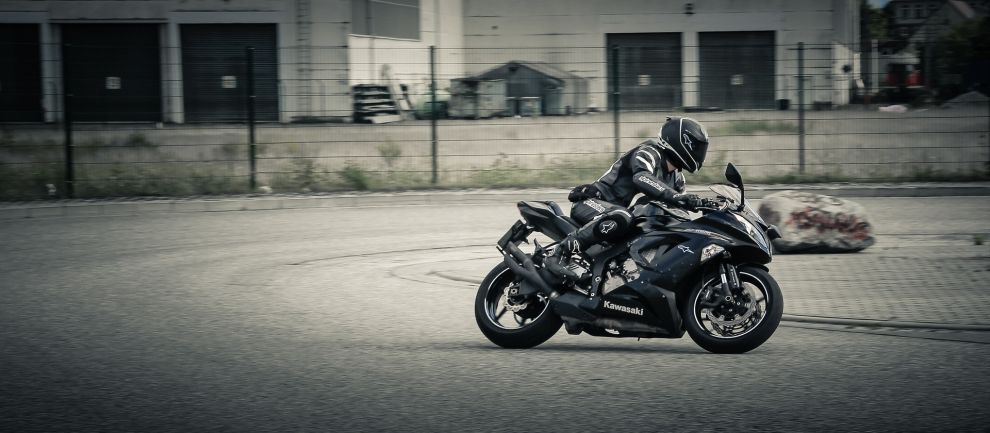Illinois Traffic Laws for Motorycles, Scooters & Mopeds
Motorcycle riders have the same rights and responsibilities as other roadway users. Because of their size and vulnerability in a crash, it is important for a driver to pay special attention to motorcycles.
Intersections
More than 50 percent of all motorcycle crashes occur at intersections. The most common situation occurs when an oncoming automobile makes a left turn in front of a motorcycle. A vehicle driver should watch for motorcycles before turning and yield the right of way. A driver should be particularly careful when making a left turn across lanes of oncoming traffic and should wait to be sure of the motorcycle operator’s intent before proceeding to make a left turn.
Stoplights
If a red light fails to turn green after 120 seconds, a motorcycle rider may proceed through an intersection after yielding the right of way to oncoming traffic.
Visibility
The failure of motorists to detect and recognize motorcycles in traffic is the most common cause of motorcycle crashes. Due to their small size, motorcycles may be difficult to see and motorists tend to underestimate their speed. A driver should expect to see motorcycles in traffic at any time, not just in the spring and summer. Drivers involved in crashes often report not seeing the motorcycle or seeing it too late to avoid a collision.
Lane Sharing
Traffic conditions and road surfaces will determine the area within the lane that the motorcyclist will use. Oil spills, potholes, gravel or debris may require the motorcyclist to adjust positions within the lane.
Although there may be enough room in the traffic lane for an automobile and a motorcyclist, a vehicle driver should remember that the motorcyclist needs the room to maneuver safely and is entitled to the entire lane. A vehicle driver should not share the lane with motorcyclists.
Passing
When being passed by a motorcycle, vehicle drivers should maintain their lane position and speed and allow the motorcycle to complete the maneuver. The vehicle driver should then assume proper lane position as quickly as possible.
Following Distance
A vehicle driver should allow at least three to four seconds following distance when behind a motorcycle so the motorcyclist has enough time to maneuver in an emergency. In dry conditions, motorcycles can stop more quickly than a car. Vehicle drivers should dim their headlights when following all vehicles, including motorcycles.
Stopping Distance
Motorcycles can stop in a shorter distance than a car. A motorcyclist’s ability to stop quickly also may depend on the rider’s experience and training.
Road Conditions
Motorcycles react differently to traffic, weather and road conditions than cars. Riders may respond in ways a vehicle driver does not expect. Wet or icy roads impair a motorcyclist’s ability to brake and maneuver. Wind gusts, both natural and those created by large passing vehicles, can move a motorcycle across an entire lane if the rider is not prepared.
Potholes or railroad tracks often require motorcyclists to change positions within their lane. Gravel roads decrease traction and may cause a rider to slow down or brake where a car would not.
In Case of a Crash
Motorcyclists may only be protected by a helmet, eye protection, boots, gloves and durable clothing. In the event of a crash, use extreme caution and seek emergency medical assistance.
Autocycle
An autocycle is a three-wheeled vehicle that has a steering wheel and seating that does not require the driver to straddle or sit astride it. This type of vehicle may be operated on Illinois roadways when correctly titled and registered with the Secretary of State.
The operator of the vehicle must have a valid Illinois driver’s license to legally operate the vehicle.
Scooters and Mopeds
Only motor-driven cycles and motorcycles properly titled and registered in Illinois may be legally operated on Illinois roadways. A scooter within one of these categories may be titled and registered in Illinois if it displays a federal safety certification label in addition to a vehicle identification number (VIN).
A scooter or moped driver must obey all signs, signals and traffic laws and is subject to most laws regarding the use of bicycles. Mopeds or scooters carrying two people must be equipped with a seat and footrest for the passenger. If driven at night, it must have a headlight visible from at least 500 feet and a taillight on the rear that is visible from at least 100-600 feet.
To determine what type of driver’s license is required to operate a scooter or moped on Illinois roadways, a driver should follow these guidelines:
- If the scooter has an engine with less than 150cc displacement, it is a motor-driven cycle and a Class L motorcycle license is required.
- If the scooter has an engine with 150cc displacement or greater, it is a motorcycle and a Class M license is required.
- A moped is a motor-driven cycle that has a maximum attainable speed in one mile or less of 30 mph and produces two-brake horsepower or less. A moped may be operated with any valid Illinois driver’s license. If a combustion engine is used, it may not exceed 50cc displacement and may not require the operator to shift gears.
